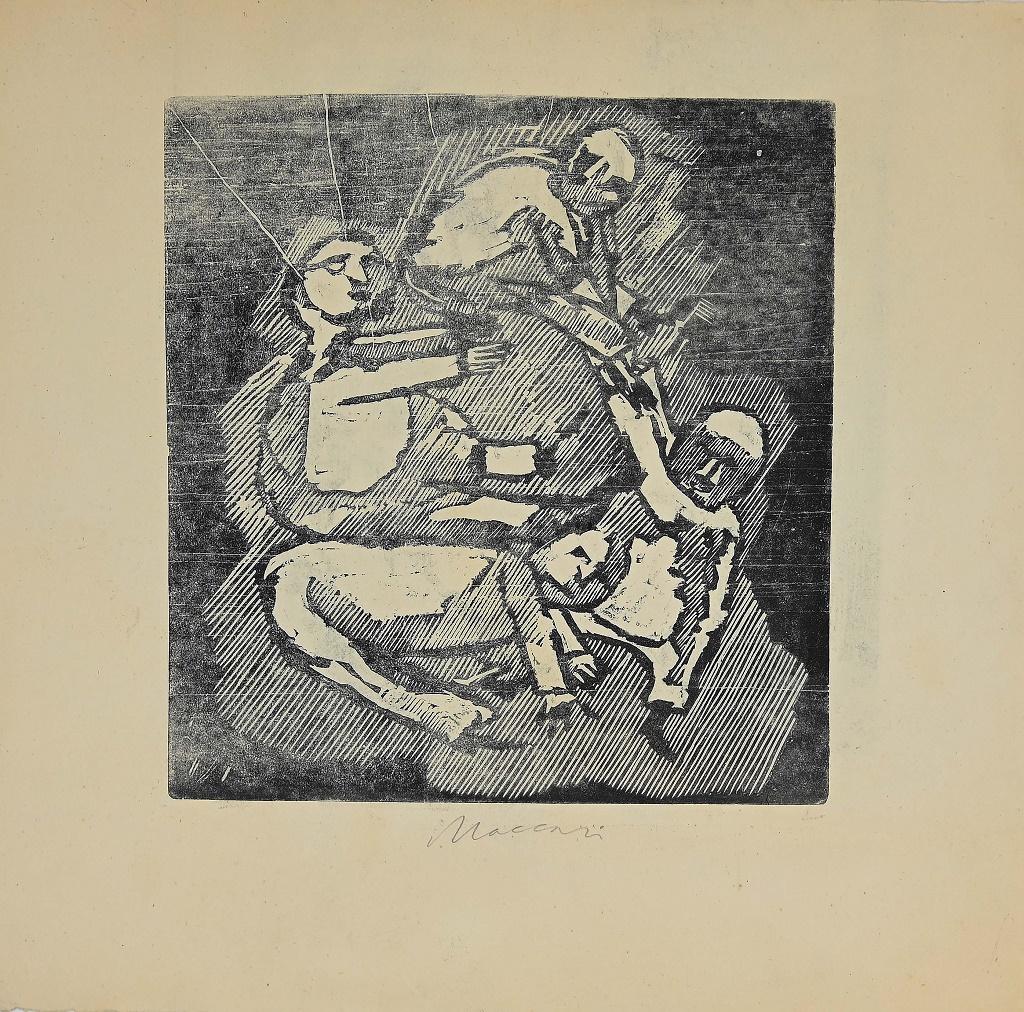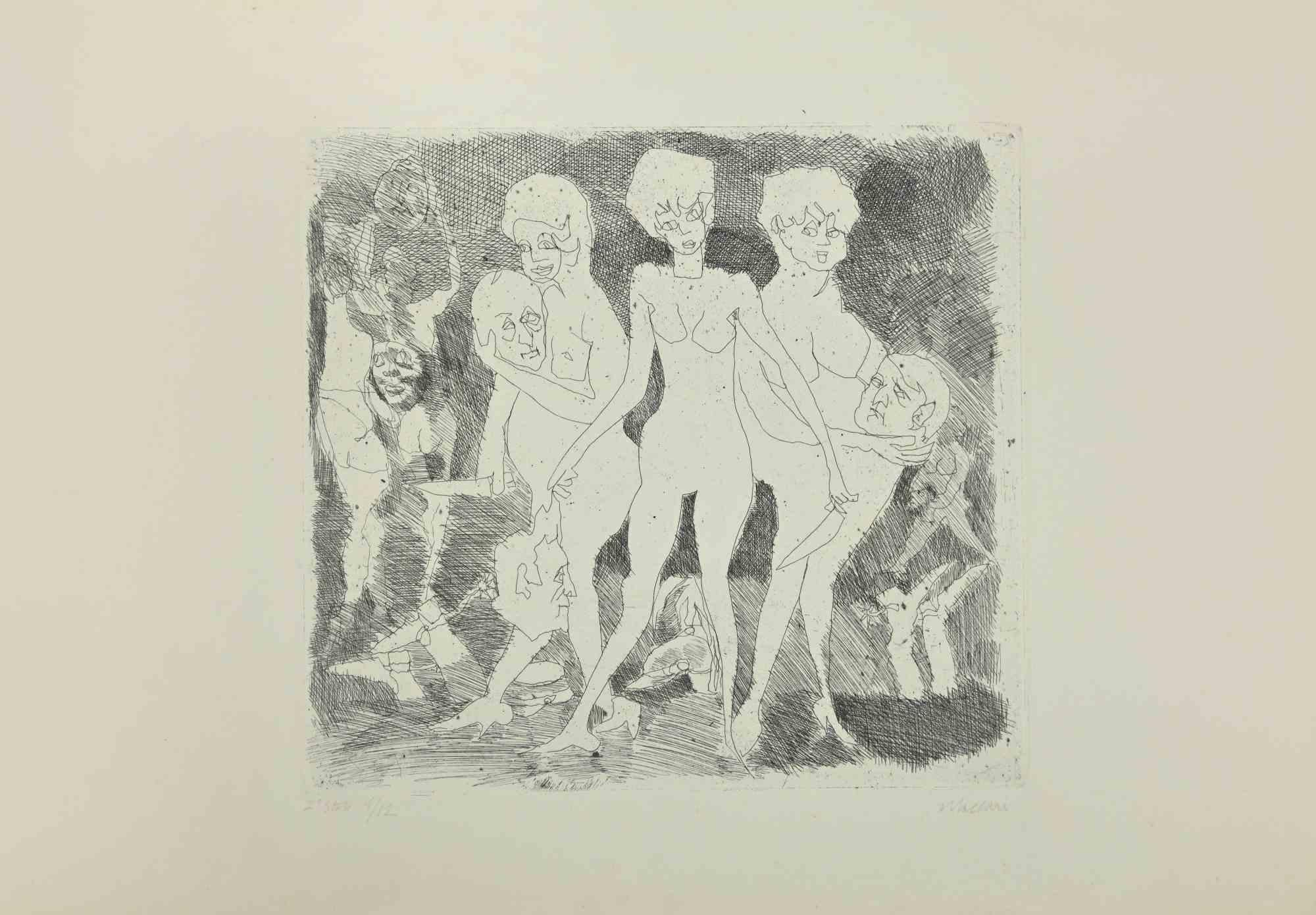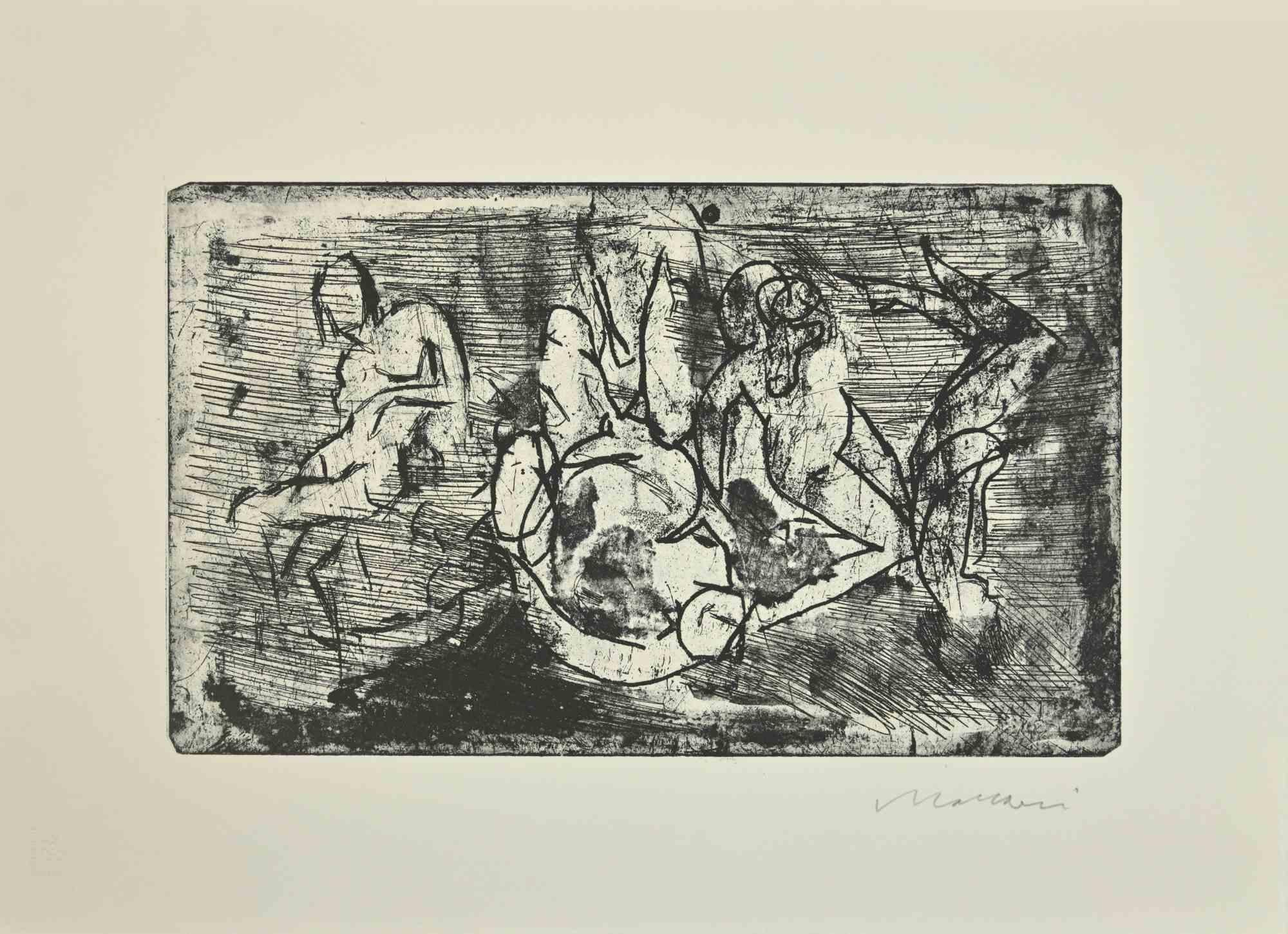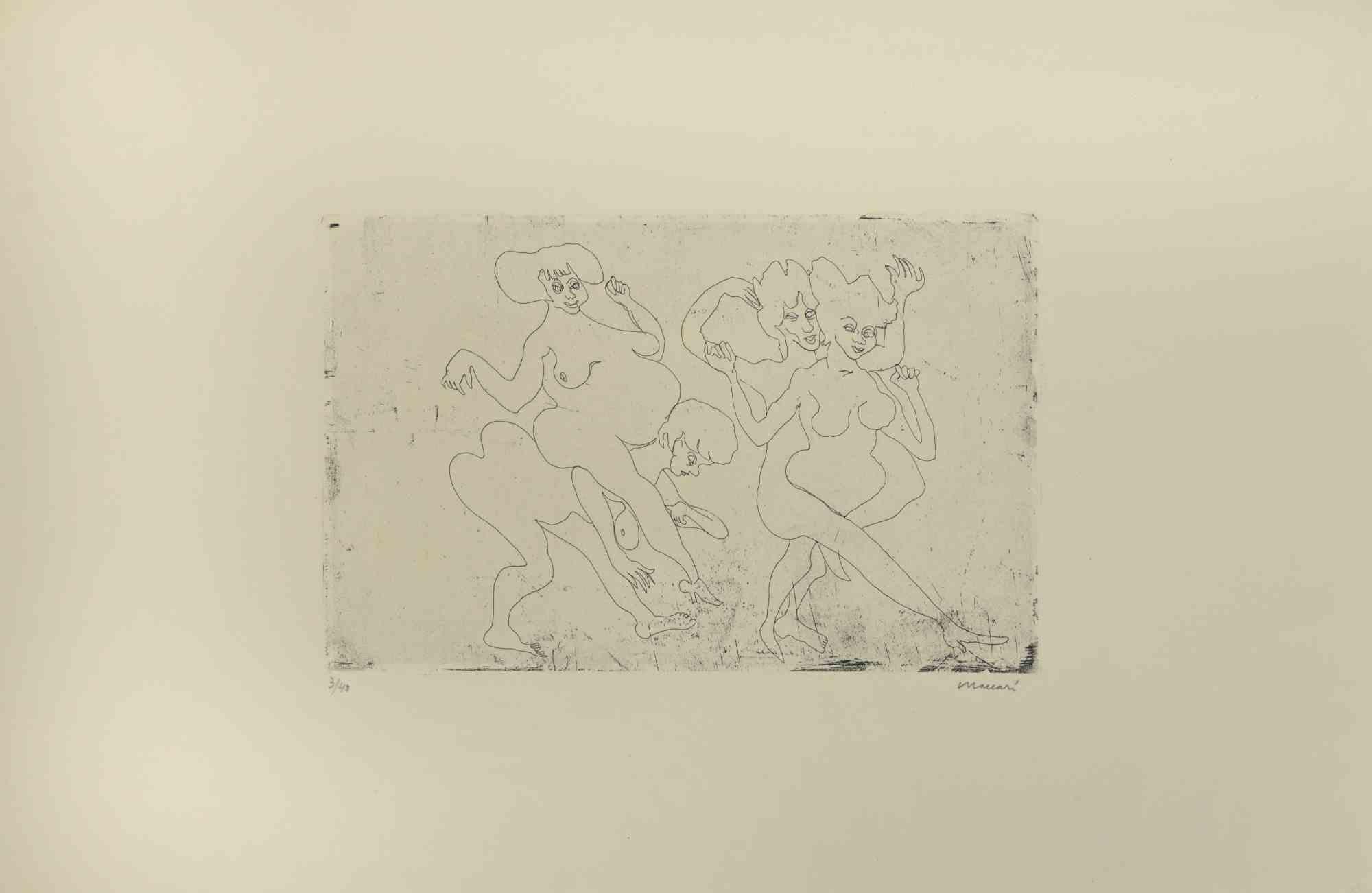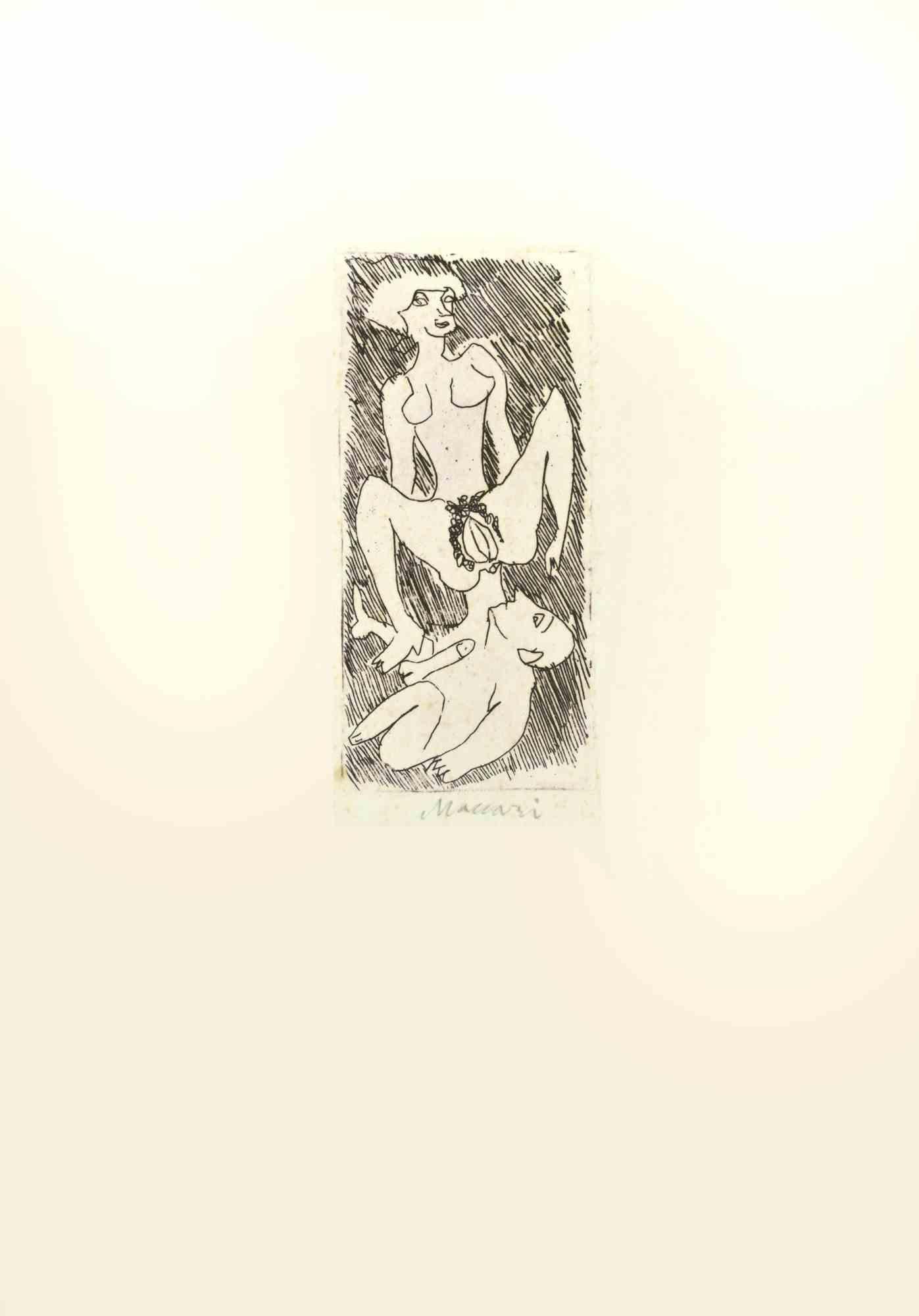Pablo PicassoMan Unveiling a Woman, 1931 (Vollard Suite, B.138)1931
1931
About the Item
- Creator:Pablo Picasso (1881-1973, Spanish)
- Creation Year:1931
- Dimensions:Height: 28 in (71.12 cm)Width: 25.5 in (64.77 cm)
- Medium:
- Movement & Style:
- Period:
- Condition:generally excellent condition with some light handling dents and creases, and a few fox spots in the margins.
- Gallery Location:Greenwich, CT
- Reference Number:
Pablo Picasso
One of the most prolific and revolutionary artists the world has ever seen, Pablo Picasso had a tremendous impact on the development of 20th-century modern art. Although he is best known for his association with the Cubist movement, which he founded with Georges Braque, Picasso’s influence extends to Surrealism, neoclassicism and Expressionism.
“Every act of creation is, first of all, an act of destruction,” the Spanish artist proclaimed. In Picasso's Cubist paintings, he emphasizes the two-dimensionality of the canvas, breaking with conventions regarding perspective, foreshortening and proportion. Picasso was inspired by Iberian and African tribal art. One of his most famous pre-Cubist works is Les Demoiselles d’Avignon (1907), a painting considered immoral and shocking at the time for its depiction of nude women whose faces resemble Iberian tribal masks.
Picasso made many portraits in this style, most often of the women in his life, their expressively colored faces composed of geometric shards of surface planes. In Woman in a Hat (Olga), 1935, he painted his first wife as an assemblage of abstract forms, leaving the viewer to decipher the subject through the contrasting colors and shapes. Picasso was a tireless artist, creating more than 20,000 paintings, drawings, prints, ceramics and sculptures. Tracing his life’s work reveals the progression of modern art, on which he had an unparalleled influence.
Browse an expansive collection of Pablo Picasso's art on 1stDibs.
- ShippingRetrieving quote...Ships From: New Orleans, LA
- Return PolicyA return for this item may be initiated within 3 days of delivery.
- Painter and Model with Necklace (B.1389), 1966By Pablo PicassoLocated in Greenwich, CT"Painter and Model with Necklace" is an intaglio print on paper, comprised of etching, aquatint and drypoint technique. The image size is 11.5 x 14.75 inches and the framed size meas...Category
20th Century Modern Prints and Multiples
MaterialsDrypoint, Aquatint
- Martian Dalí Equipped with a Holo-Electronic Microscope (The Conquest of CosmosBy Salvador DalíLocated in Greenwich, CTMartian Dalí Equipped with a Holo-Electronic Microscope – 29.75 x 21.87" image size, signed ‘Dalí’ lower right and annotated lower left. Framed in an ornate gold-tone frame. Micheler...Category
20th Century Surrealist Prints and Multiples
MaterialsLithograph, Drypoint
- Dalínean ProphecyBy Salvador DalíLocated in Greenwich, CTDalínean Prophecy is a drypoint etching with lithographic color on japon paper, image size 16 x 23.5 inches, signed Dalí lower right and numbered XVIII/LXXV lower left. From the edit...Category
20th Century Surrealist Prints and Multiples
MaterialsDrypoint, Lithograph
- Le Jument de Compère Pierre, 1972 (Le Decameron, Plate I)By Salvador DalíLocated in Greenwich, CTLe Jument de Compère Pierre from Dalí's Le Décameron portfolio is a drypoint etching with color on paper, signed Dalí lower right and numbered 17/150 lower left. From the Swedish edi...Category
20th Century Surrealist Prints and Multiples
MaterialsEtching, Drypoint
- The Unicorn Laser Disintegrates the Horns of Cosmic Rhinoceroses (The Conquest oBy Salvador DalíLocated in Greenwich, CTThe Unicorn Laser Disintegrates the Horns of the Cosmic Rhinoceroses from the Conquest of Cosmos suite – 29.5 x 22" image size, signed ‘Dalí’ lower right and annotated lower left. Fr...Category
20th Century Surrealist Prints and Multiples
MaterialsLithograph, Drypoint
- Blanchefleur, 1972 (Le Decameron, Plate H)By Salvador DalíLocated in Greenwich, CTBlanchefleur from Dalí's Le Décameron portfolio is a drypoint etching with color on paper, signed Dalí lower right and numbered 17/150 lower left. From the Swedish edition of 150 Ara...Category
20th Century Surrealist Prints and Multiples
MaterialsDrypoint, Etching
- Figures - Drypoint by Mino Maccari - 1945By Mino MaccariLocated in Roma, ITFigures 1945 is an original drypoint realized by Mino Maccari (1945). The artwork is in good conditions, except for worn paper on the margins. Image Dimensions: 20x18.8 cm. Hand- ...Category
1940s Modern Figurative Prints
MaterialsPaper, Drypoint
- Figures - Drypoint by Mino Maccari - Mid-20th CenturyBy Mino MaccariLocated in Roma, ITMid-20th Century. Hand-signed in the lower right part. Numbered. Edition 1/12. Good conditions. Mino Maccari (Siena, 1924-Rome, June 16, 1989) was an Italian writer, painter, engraver and journalist, winner of the Feltrinelli Prize for Painting in 1963 and first winner of the Forte dei Marmi Satira Prize in 1973.After completing his secondary education, he enrolls in university. An interventionist like many young people of his time, he took part in the Great War at the age of nineteen as a field artillery officer. At the end of the conflict he resumed his university studies in Siena and in 1920 he graduated in law. In 1924 he was called by Angiolo Bencini to take care of the printing of the magazine Il Selvaggio, openly uncompromising fascist, revolutionary and anti-bourgeois, where his first engravings were published. After a few years of coexistence between work at the newspaper and the law firm, at the beginning of 1926 he left the legal profession to take over the direction of Il Selvaggio which he would hold until 1942. In 1928 he was the author of the small book published by Vallecchi (Florence), Il Trastullo di Strapaese (little songs and engraved woodwinds) which collected fascist songs (the same book was seized several times from Antonio Gramsci during his detention). With the transfer of the editorial staff of the Selvaggio in 1925 from Colle di Val d'Elsa to Florence, Maccari collaborated with Ardengo Soffici, Ottone Rosai and Achille Lega. In the meantime, between 1927 and 1930, he made himself known to the general public as a painter by participating in various national exhibitions. Also in 1930 Maccari works in Turin at La Stampa as editor-in-chief and has the writer Curzio Malaparte as director. His presence in the cultural and editorial world of the fascist regime is very intense, he writes and collaborates with various magazines: Quadrivio, L'Italia Letteraria, L'Italiano and Omnibus by Leo Longanesi; then, during the war, in il Primato di Bottai and, subsequently again, in Il Mondo di Pannunzio (from the first number, in 1949), up to Documento by Federigo Valli. His graphic production is also vast, ranging from the Album of Vallecchi (1925), Il trastullo di Strapaese (1928) to Linoleum (1931). Maccari illustrated in 1934 La vecchia del Bal Bullier by Antonio Baldini and in 1942 he published the Album folder, followed by Come quando fuori Piove and Il superfluo illustrata.For his pictorial work full of evident chromatic accentuations and fast brushstrokes, the violent drawing combined with the lively stroke of the graphic sign of his engravings, he is recognized by critics as a complete artist. In 1962 he was also entrusted with the presidency of the Accademia di San Luca in Rome and managed to obtain a personal exhibition at Gallery 63 in New York. His production of drawings, watercolors, temperas, etc. is endless, sometimes in collaboration with prestigious publishing houses; it is worth mentioning, just as an excellent example, the 32 b/w and color drawings with which he illustrated Il gusto di vivere, a volume that collects writings by Giancarlo Fusco, edited by Natalia Aspesi and published by Laterza in 1985. Maccari, Sienese and great contradaiolo della Torre, painted the Palio...Category
Mid-20th Century Modern Figurative Prints
MaterialsPaper, Drypoint, Etching
- Figures - Drypoint by Mino Maccari - Mid-20th CenturyBy Mino MaccariLocated in Roma, ITFigures is an Etching and Drypoint realized by Mino Maccari in the Mid-20th Century. Hand-signed in the lower right part. Good conditions. Mino Maccari (Siena, 1924-Rome, June ...Category
Mid-20th Century Modern Figurative Prints
MaterialsPaper, Drypoint, Etching
- Figures - Drypoint by Mino Maccari - Mid-20th CenturyBy Mino MaccariLocated in Roma, ITFigures is an Etching and Drypoint realized by Mino Maccari in the Mid-20th Century. Hand-signed in the lower right part. Numbered. Edition,3/40. Good conditions. Mino Maccari (Siena, 1924-Rome, June 16, 1989) was an Italian writer, painter, engraver and journalist, winner of the Feltrinelli Prize for Painting in 1963 and first winner of the Forte dei Marmi Satira Prize in 1973.After completing his secondary education, he enrolls in university. An interventionist like many young people of his time, he took part in the Great War at the age of nineteen as a field artillery officer. At the end of the conflict he resumed his university studies in Siena and in 1920 he graduated in law. In 1924 he was called by Angiolo Bencini to take care of the printing of the magazine Il Selvaggio, openly uncompromising fascist, revolutionary and anti-bourgeois, where his first engravings were published. After a few years of coexistence between work at the newspaper and the law firm, at the beginning of 1926 he left the legal profession to take over the direction of Il Selvaggio which he would hold until 1942. In 1928 he was the author of the small book published by Vallecchi (Florence), Il Trastullo di Strapaese (little songs and engraved woodwinds) which collected fascist songs (the same book was seized several times from Antonio Gramsci during his detention). With the transfer of the editorial staff of the Selvaggio in 1925 from Colle di Val d'Elsa to Florence, Maccari collaborated with Ardengo Soffici, Ottone Rosai and Achille Lega. In the meantime, between 1927 and 1930, he made himself known to the general public as a painter by participating in various national exhibitions. Also in 1930 Maccari works in Turin at La Stampa as editor-in-chief and has the writer Curzio Malaparte as director. His presence in the cultural and editorial world of the fascist regime is very intense, he writes and collaborates with various magazines: Quadrivio, L'Italia Letteraria, L'Italiano and Omnibus by Leo Longanesi; then, during the war, in il Primato di Bottai and, subsequently again, in Il Mondo di Pannunzio (from the first number, in 1949), up to Documento by Federigo Valli. His graphic production is also vast, ranging from the Album of Vallecchi (1925), Il trastullo di Strapaese (1928) to Linoleum (1931). Maccari illustrated in 1934 La vecchia del Bal Bullier by Antonio Baldini and in 1942 he published the Album folder, followed by Come quando fuori Piove and Il superfluo illustrata.For his pictorial work full of evident chromatic accentuations and fast brushstrokes, the violent drawing combined with the lively stroke of the graphic sign of his engravings, he is recognized by critics as a complete artist. In 1962 he was also entrusted with the presidency of the Accademia di San Luca in Rome and managed to obtain a personal exhibition at Gallery 63 in New York. His production of drawings, watercolors, temperas, etc. is endless, sometimes in collaboration with prestigious publishing houses; it is worth mentioning, just as an excellent example, the 32 b/w and color drawings with which he illustrated Il gusto di vivere, a volume that collects writings by Giancarlo Fusco, edited by Natalia Aspesi and published by Laterza in 1985. Maccari, Sienese and great contradaiolo della Torre, painted the Palio...Category
Mid-20th Century Modern Figurative Prints
MaterialsPaper, Drypoint, Etching
- Erotic Scene - Etching by Mino Maccari - Mid-20th CenturyBy Mino MaccariLocated in Roma, ITErotic Scene is an Etching and Drypoint realized by Mino Maccari in the Mid-20th Century. Hand-signed in the lower part. Good conditions. Mino Maccari (Siena, 1924-Rome, June 1...Category
Mid-20th Century Modern Figurative Prints
MaterialsPaper, Drypoint, Etching
- Steps to the Grand Canal, St. Mark's in the distance, Venice.By Donald Shaw MacLaughlanLocated in Middletown, NYA lovely view of Venice from the water. Etching with drypoint on antique cream laid paper with a large figural watermark, signed in pencil, lower right. 14 1/4 x 11 inches (362 x 280...Category
Early 20th Century American Modern Landscape Prints
MaterialsLaid Paper, Drypoint, Etching
Recently Viewed
View AllRead More
Science Uncovers Hidden Truths behind Young Pablo Picasso’s Blue Period
From 1901 to 1904, Picasso limited his palette to bluish hues in producing some of his most famous early works. A new show looks at the recycled materials, hidden underpaintings, surprising influences and bohemian lifestyle that led to their creation.
Who Are the Most Popular Artists on 1stdibs?
Learn the stories of some of the world's most recognizable artworks and their makers.
